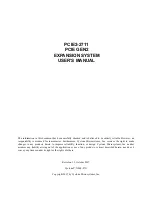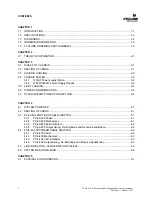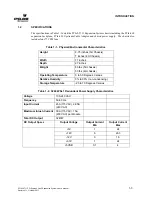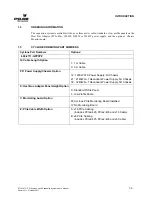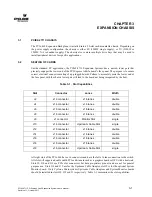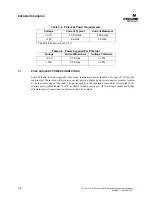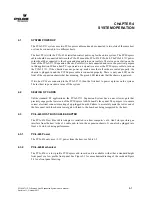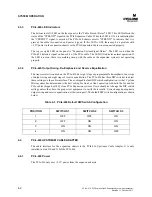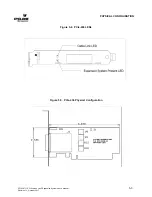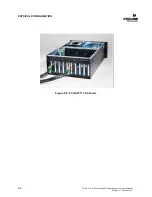
PCIe2-2711 PCI Express Gen2 Expansion System User’s Manual
2-1
Revision 1.1, October 2017
CHAPTER 2
THEORY OF OPERATION
2.1
THEORY OF OPERATION
The base PCI Express link is a transmit differential pair and a receive differential pair. This is known as
a lane. The signaling rate for PCI Express Gen2 is 5.0 Gigabits/second/Lane/direction. A links
bandwidth can be increased by increasing the number of lanes. The common lane configurations are
one lane, four lane, eight lane and sixteen lane. These are written as “x1”, “x4”, “x8” and “x16” respec-
tively and are called “by one”, “by four”, “by eight” and “by sixteen”.
The PCIe2-2711 has two x16 host links. The PCIe-460 is organized as two expansion slot segments of
four slots each. Except for power, the two sides are completely independent. Each side has their own
switch, clock and reset resources.
All eight slots of the PCIe-460 are x16 slots. Side A is slots J2, J4, J6, J8 and J10 is the Upstream slot
for Side A. Side B is slots J12, J14, J16, J18 and J19 is the Upstream slot for Side B. All slots can
accommodate x1, x4, x8 or x16 add-in cards. Plugging a smaller link card into a larger link connector is
fully allowed by the PCI Express Specification.
Once the PCIe-426s are installed into their host PCs, the cables connected to the PCIe2-2711 chassis,
the chassis plugged into an AC power outlet and any desired add-in cards are installed, the system is
ready to be turned on. When a host is turned on, a signal from the PCIe-426 will turn on the PCIe2-2711
chassis. When two hosts are used, the first host on will turn the system on and the last host off will turn
the system off. Immediately after power up, a number of things happen. First, the PCI Express links are
initialized. This is a purely hardware initialization where each PCI Express link is set up following a
negotiation of lane widths by the two ends of each link. No firmware or operating system software is
involved. Once the links are initialized or “trained”, there are LED indicators on each of the Cyclone
Microsystems cards that indicate the links are trained. A detailed explanation of the LEDs follows later
in this manual.
One essential requirement for system initialization is the ability of the host system’s BIOS to be able to
enumerate the many bridges inherent in a complex PCI Express design. The links from the PCIe-426 to
the PCIe-460 are created with PCI Express Switches. Each link looks like a PCI-to-PCI bridge to the
Host’s BIOS. The number of bridges can add up quickly. Older BIOS may not have the resources to
enumerate the number of bridges. Make sure that the BIOS on the host computer has the latest updated
BIOS. If required, contact the host system’s manufacturer to make sure that the BIOS used can handle
the large number of bridges that it will see in the system.

